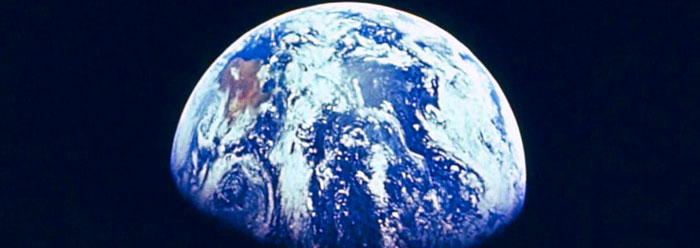Japan's disastrous March 11 earthquake has had a lasting geologic impact on the earth. Italy's National Institute of Geophysics and Volcanology preliminarily found that it moved the planet's rotation axis by 25 centimeters.1 U.S. Geological Survey seismologist Dr. Daniel McNamara told The Huffington Post, "The land actually dropped, so when the tsunami came in, it's just staying."2
The earth movements caused a slight contraction in the overall circumference of the planet, which has shortened the length of each day by about a millionth of a second.1 Like a spinning figure skater bringing his or her arms inward to increase speed, the earth appears to be rotating the tiniest bit faster now. Can this observation inform understanding of the length of days in the opening chapters of Genesis?
Historian and author Bill Cooper showed how the length of each day was such that exactly 360 days comprised a year…the earth's single revolution around the sun in the pre-Flood world.3 He used information from portions of Genesis chapters 7 and 8 to calculate a year consisting of 12 months of 30 days each. These days, it takes 365.256366 days for the earth to orbit the sun. Could catastrophic events have added more than five days to the earth's year?
The effects of Japan's earthquake were relatively miniscule, subtracting only a tiny fraction of a second's worth of day/night rotations during a single year. So, altering the earth's day/year synchronization by five days would take an almost unimaginably powerful earth-altering event. And yet, there is geological evidence that just such a fantastic catastrophe occurred.
First, the giant layers of continental sedimentary rocks laden with fossils of sea creatures testify to a tremendous upheaval consistent with a worldwide Flood. Also, the rents in the earth's crust that comprise today's tectonic plate boundaries show a world that now has a broken-up crust. But most dramatic of all is the existence of a relatively young ocean floor. Research geophysicist John Baumgartner wrote in 2004, "Many lines of evidence show that today's igneous ocean floor…all of it…has formed via seafloor spreading since roughly mid-way through the Flood."4 The earth's crust looks as though it has recently suffered a complete overhaul.
In this scenario, the equatorial radius of the pre-Flood earth would have been 30 miles longer than today’s radius, assuming earth’s mass distribution is the same now as it was then. This represents about a 3.5 percent decrease in earth’s equatorial circumference, perhaps caused by runaway subduction associated with the Flood, causing earth to spin on its axis more than five days faster.5
The testimony of Scripture is that at the start of the year-long global Flood "the same day were all the fountains of the great deep broken up."6 This indicates that subterranean material was violently thrust to the earth's surface, having torn through the crust, leading to a profound redistribution of the planet's mass. Historical evidence from Scripture and geological evidence from the earth indicate that it was indeed possible for the rigors of the Flood to have significantly altered the number of days in a year.
References
- Chai, C. Japan quake shifted earth's axis by 25 cm. National Post. Posted on nationalpost.com March 11, 2011, accessed March 18, 2011.
- Donovan, T. Japan Earthquake Shifted Coastline Maximum Of 8 Feet, Scientists Say. The Huffington Post. Posted on huffingtonpost.com March 13, 2011, accessed March 18, 2011.
- Cooper, B. 2009. The Calendar and the Antiquity of Genesis. Acts & Facts. 38(6): 19.
- Baumgardner, J. 2005. Recent Rapid Uplift of Today's Mountains. Acts & Facts. 34(3).
- Baumgardner, J. 1994. Runaway Subduction as the Driving Mechanism for the Genesis Flood. Proceedings of the Third International Conference on Creationism. Pittsburgh, PA: Creation Science Fellowship.
- Genesis 7:11.
* Mr. Thomas is Science Writer at the Institute for Creation Research.
Article posted on March 31, 2011.




